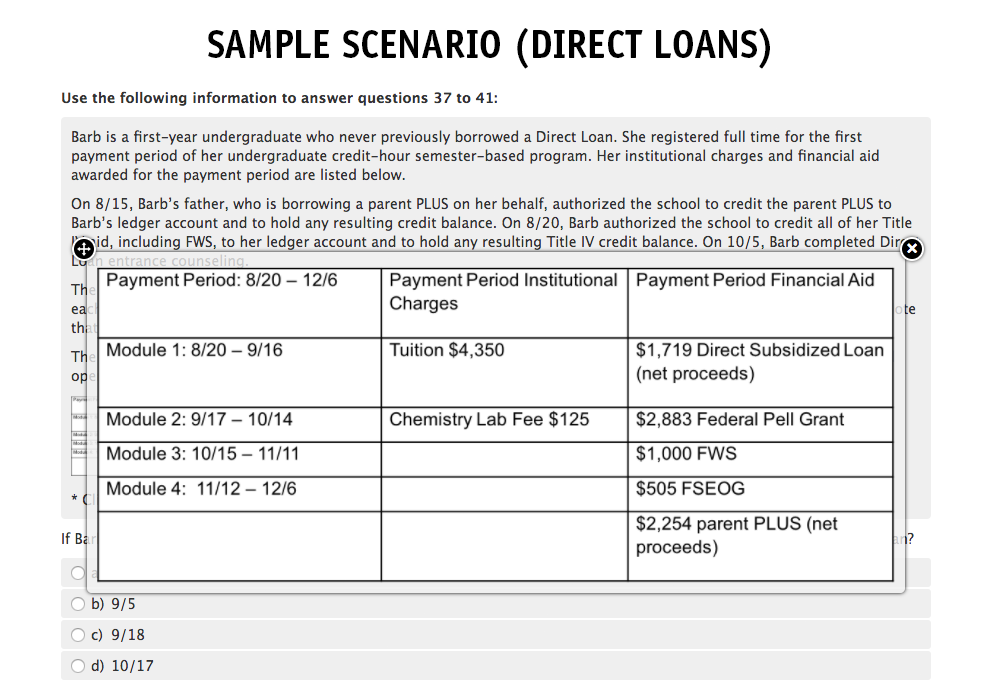Test Preview: Need Analysis
Content Areas
To earn this credential, you will need to know the underlying principles of Title IV need analysis leading to the determination of a student’s expected family contribution (EFC), including the three regular formulas used to calculate the EFC and the qualifications for the Automatic Zero EFC and the Simplified Needs Test. You also will need to know how to recalculate the EFC for enrollment periods other than nine months and for summer periods of enrollment. This will enable you demonstrate the ability to ensure the use of accurate and appropriate EFC calculations, which directly affects the equitable distribution of financial aid funding.
The range of topics in this test include:
- General Concepts of Need Analysis
- The Regular Formula
- The Simplified Formulas
- Recalculating the EFC
Tests may include questions pertaining to a variety of program structures, such as credit- or clock-hour, term or nonterm, standard or nonstandard term, undergraduate or graduate/professional programs, and programs of various length (shorter than one year, two-year, four-year, certificate, etc.).
Sample Test Questions
 All tests will include a combination of multiple-choice and scenario-based questions. Some questions may involve viewing or downloading worksheets, charts, and tables. Please ensure you have a calculator available while taking a credential test.
All tests will include a combination of multiple-choice and scenario-based questions. Some questions may involve viewing or downloading worksheets, charts, and tables. Please ensure you have a calculator available while taking a credential test.
Review the following examples, which are similar in structure and scope to the questions that will appear on the test for this topic. Check your answers by selecting the question's link.
1. If a dependent student qualifies for the simplified needs test, then
- only student assets will count toward the primary EFC.
- only parent assets will count toward the primary EFC.
- neither student nor parent assets will count toward the primary EFC.
- both student and parent assets will count toward the secondary EFC.
2. The primary EFC will always be __________ the secondary EFC.
- more than
- more than or equal to
- less than
- less than or equal to
- Simplified Formula A
- Regular Formula B
- Regular Formula C
- Automatic zero EFC
- be the same as the EFC on the first ISIR because the income and assets didn’t change.
- decrease because the amount of the Education Savings and Asset Protection Allowance will increase.
- increase because the parent is older.
- not be calculated until the CPS reviews and resolves the conflicting information.
- The student has a lower income protection allowance with Formula B than with Formula A
- The student has a lower social security tax allowance with Formula B than with Formula A
- The student no longer qualifies for an automatic zero EFC
- The student’s income is no longer reduced by the parent’s negative adjusted available income
Recommended Resources
Prepare for this test by reviewing related content in resources such as:
- Higher Education Act of 1965, as amended (view U.S. Code Title 20, Chapter 28)
- Federal regulations (view NASFAA’s Compiled Title IV Regulations)
- U.S. Department of Education guidance:



